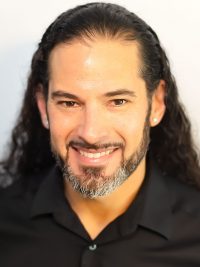Bio-Requirements for Space Settlement

Light energy and the recycling of water, vital gases, & nutrients will be needed to sustain extraterrestrial human settlements. Speakers will explain how to grow food in regolith‐converted soil and couple it with rigorous waste treatment. They will also explain the need for microbiota and macro animal life.
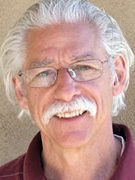
Track Chair:
Alfred Anzaldua
Alfred Anzaldúa is a 30‐year veteran of space advocacy and Chair of the NSS International Committee, Deputy Chair of the NSS Policy Committee, and a Tucson L5 Space Society officer. He has authored articles in the Space Review, Ad Astra, and other publications, and gives frequent presentations on space‐related issues.
Track Chair:
Alfred Anzaldua
Alfred Anzaldúa is a 30‐year veteran of space advocacy and Chair of the NSS International Committee, Deputy Chair of the NSS Policy Committee, and a Tucson L5 Space Society officer. He has authored articles in the Space Review, Ad Astra, and other publications, and gives frequent presentations on space‐related issues.
Speakers
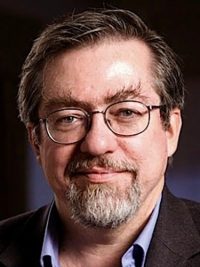
John C. Mankins
Vice President, Moon Village Association
Mankins Space Technologies, Inc.
John C. Mankins, President of Mankins Space Technology is an internationally recognized leader in space systems and technology innovation, and as a highly effective manager of large-scale technology R&D programs.Mr. Mankins’ 25-year career at NASA and CalTech’s Jet Propulsion Laboratory (JPL) ranged from flight projects and space mission operations, to systems level innovation and advanced technology research & development management. He is also well known as an innovator in R&D management. For example, building on the original NASA ‘technology readiness level’ (TRL) scale for technology assessment (defined first with 6 or 7 levels in the 1970s), he extended the scale to flight systems and operations in the late 1980s (TRLs 8 and 9), published the first detailed definitions of the TRLs in 1995, and promoted the use of the scale by the US Department of Defense in the late 1990s. Before leaving NASA, Mr. Mankins was the manager of Exploration Systems Research and Technology within the Exploration Systems Mission Directorate with responsibility for a $416.8M annual budget, involving more than 100 individual projects and over 3,000 personnel. For 10 years, he was the manager of Advanced Concepts Studies at NASA, and the lead for critical studies of space solar power, highly reusable space transportation, affordable human exploration approaches, and other topics. He was the creator or co-creator of numerous novel concepts, including the ‘MagLifter’ electromagnetic launch assist system, the Internet-based NASA ‘Virtual Research Center’ the ‘Solar Clipper’ interplanetary transport vehicle, the ‘SunTower’ space solar power system, the ‘Hybrid Propellant Module’ for in-space refueling, the ‘HabBot’ mobile planetary outpost architecture, the Advanced Technology Lifecycle Analysis System (ATLAS), and others. In recognition of his accomplishments, he has received numerous awards and honors, including the prestigious NASA Exceptional Technology Achievement Medal (of which he was the first recipient).
Presentation: The Big Picure for Bio-Requirements
John C. Mankins
Vice President, Moon Village Association
Mankins Space Technologies, Inc.
John C. Mankins, President of Mankins Space Technology is an internationally recognized leader in space systems and technology innovation, and as a highly effective manager of large-scale technology R&D programs.Mr. Mankins’ 25-year career at NASA and CalTech’s Jet Propulsion Laboratory (JPL) ranged from flight projects and space mission operations, to systems level innovation and advanced technology research & development management. He is also well known as an innovator in R&D management. For example, building on the original NASA ‘technology readiness level’ (TRL) scale for technology assessment (defined first with 6 or 7 levels in the 1970s), he extended the scale to flight systems and operations in the late 1980s (TRLs 8 and 9), published the first detailed definitions of the TRLs in 1995, and promoted the use of the scale by the US Department of Defense in the late 1990s. Before leaving NASA, Mr. Mankins was the manager of Exploration Systems Research and Technology within the Exploration Systems Mission Directorate with responsibility for a $416.8M annual budget, involving more than 100 individual projects and over 3,000 personnel. For 10 years, he was the manager of Advanced Concepts Studies at NASA, and the lead for critical studies of space solar power, highly reusable space transportation, affordable human exploration approaches, and other topics. He was the creator or co-creator of numerous novel concepts, including the ‘MagLifter’ electromagnetic launch assist system, the Internet-based NASA ‘Virtual Research Center’ the ‘Solar Clipper’ interplanetary transport vehicle, the ‘SunTower’ space solar power system, the ‘Hybrid Propellant Module’ for in-space refueling, the ‘HabBot’ mobile planetary outpost architecture, the Advanced Technology Lifecycle Analysis System (ATLAS), and others. In recognition of his accomplishments, he has received numerous awards and honors, including the prestigious NASA Exceptional Technology Achievement Medal (of which he was the first recipient).
Presentation: The Big Picure for Bio-Requirements

Willa Mankins
Presentation: The Big Bio-requirements Picture
Willa Mankins
Presentation: The Big Bio-requirements Picture

William Kramer
Hawaii Research Center for Futures Studies (University of Hawaii)
William Kramer received a BS in zoology from the University of Maryland in 1970. After serving in the Submarine Service, he worked as a wildlife biologist at the Smithsonian Institution and the U.S. Fish and Wildlife Service’s Endangered Species Program. He received a master’s degree in environmental policy from the University of Hawaii and a Graduate Certificate in public administration in 1986. He then headed the Service’s Branch of Endangered Species Consultation and Recovery at their headquarters in Washington, D.C. William subsequently taught biology and bioethics at Hawaii Pacific University and assisted the US Navy for over a decade as a consultant on endangered species and environmental issues.
He earned a doctorate in political science from the University of Hawaii in 2012 regarding outer space policy. His dissertation explored how bioethics may be applied to the search for extraterrestrial life and the legal and ethical issues of patenting alien organisms. As part of that work, he spent several weeks in a Mars simulation habitat in the high desert of Utah and assisted with the NASA’s Space Exploration Analog and Simulation Project in Hawaii. He currently lectures and conducts workshops at the International Space University in Strasbourg, France. Dr. Kramer has authored publications in refereed journals, newspapers, and other media on the need for applying environmental assessment techniques to outer space actions, bioethics and the search for extraterrestrial life, and concepts of colonization of our Moon, the solar system and beyond. William now lives in Frederick, Maryland, and is employed as an extraterrestrial environmental analyst for HDR, Inc. His work can be accessed through his website: http://www.OuterSpaceConsulting.com.
Presentation: Sustaining Lunar Resources through Environmental Assessment
William Kramer
Hawaii Research Center for Futures Studies (University of Hawaii)
William Kramer received a BS in zoology from the University of Maryland in 1970. After serving in the Submarine Service, he worked as a wildlife biologist at the Smithsonian Institution and the U.S. Fish and Wildlife Service’s Endangered Species Program. He received a master’s degree in environmental policy from the University of Hawaii and a Graduate Certificate in public administration in 1986. He then headed the Service’s Branch of Endangered Species Consultation and Recovery at their headquarters in Washington, D.C. William subsequently taught biology and bioethics at Hawaii Pacific University and assisted the US Navy for over a decade as a consultant on endangered species and environmental issues.
He earned a doctorate in political science from the University of Hawaii in 2012 regarding outer space policy. His dissertation explored how bioethics may be applied to the search for extraterrestrial life and the legal and ethical issues of patenting alien organisms. As part of that work, he spent several weeks in a Mars simulation habitat in the high desert of Utah and assisted with the NASA’s Space Exploration Analog and Simulation Project in Hawaii. He currently lectures and conducts workshops at the International Space University in Strasbourg, France. Dr. Kramer has authored publications in refereed journals, newspapers, and other media on the need for applying environmental assessment techniques to outer space actions, bioethics and the search for extraterrestrial life, and concepts of colonization of our Moon, the solar system and beyond. William now lives in Frederick, Maryland, and is employed as an extraterrestrial environmental analyst for HDR, Inc. His work can be accessed through his website: http://www.
Presentation: Sustaining Lunar Resources through Environmental Assessment

Rodrigo Romo
PISCES (Pacific International Space Center for Exploration Systems)
Rodrigo Romo is the Director at the Pacific International Space Center for Exploration Systems (PISCES). Besides overseeing PISCES’ operations, he has been directly involved with the development of PISCES’ planetary exploration rover. Other areas in which he has been involved includes robotic construction and utilization of Hawaiian Basalt as a source for ISRU manufacturing.
Romo began his career near Tucson, Arizona at Biosphere II – the largest fully enclosed facility dedicated to researching climate change, ecosystem interactions, and space colonization during its time. From 1992 through 1997, he held several key positions including being a crewmember of the second manned mission overseeing instrumentation and air monitoring systems, as well as working in research and engineering departments.
He is originally from Guadalajara, Mexico and earned his undergraduate degree in Chemical Engineering from ITESO University in 1992. He later obtained his Master’s degree in Business Administration from the University of Arizona.
Presentation: Lessons Learned from Biosphere II
Rodrigo Romo
PISCES (Pacific International Space Center for Exploration Systems)
Rodrigo Romo is the Director at the Pacific International Space Center for Exploration Systems (PISCES). Besides overseeing PISCES’ operations, he has been directly involved with the development of PISCES’ planetary exploration rover. Other areas in which he has been involved includes robotic construction and utilization of Hawaiian Basalt as a source for ISRU manufacturing.
Romo began his career near Tucson, Arizona at Biosphere II – the largest fully enclosed facility dedicated to researching climate change, ecosystem interactions, and space colonization during its time. From 1992 through 1997, he held several key positions including being a crewmember of the second manned mission overseeing instrumentation and air monitoring systems, as well as working in research and engineering departments.
He is originally from Guadalajara, Mexico and earned his undergraduate degree in Chemical Engineering from ITESO University in 1992. He later obtained his Master’s degree in Business Administration from the University of Arizona.
Presentation: Lessons Learned from Biosphere II
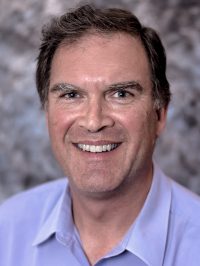
Grant Anderson
CEO, Paragon Space Technology Company
Mr. Anderson co-founded Paragon in 1993. From the time of the company’s inception until fall 2014, he was the VP of Engineering and Chief Engineer. He was responsible for the design and implementation of not only many of Paragon’s technical achievements, but also its processes of engineering rigor in a stepped approach of requirements, design, build, test and delivery. This process has been cited by many customers as unique, disciplined and highly productive. As his background includes not only technical but financial and managerial training as well, he has held diverse positions at Paragon including Treasurer/Secretary, CFO, Sr. VP of Operations, Chief Operating Officer and Director of Manufacturing.
Recognized as a leader in the life support in extreme environments field, Mr. Anderson has led the systems and conceptual design of multiple spacecraft under contract to Lockheed Martin, Boeing, Sierra Nevada Corporation, Space X, NASA, Inspiration Mars Foundation and others. Prior to launching Paragon, Mr. Anderson was the design lead at Lockheed Martin in Sunnyvale, California for the International Space Station Solar Array Panels.
Mr. Anderson holds two degrees from Stanford University in Mechanical Engineering (B.S.) and Aeronautical and Astronautical Engineering (M.S.) and is a registered Professional Engineer in the state of California.
Mr. Anderson’s passion for excellence drives him to support the next generation of engineers and leaders through participation in educational work outside of Paragon. He is is a former member of the Industry Advisory Board for the College of Engineering at the University of Arizona and is on the Tucson Metro Chamber of Commerce Board of Directors.
In his spare time, Mr. Anderson is an avid bicyclist and is known to ride solo for hundreds of miles to clear his mind. Mr. Anderson lives in Tucson with his wife of almost 30 years, Ines. They have three children.
Presentation: Life Support Systems
Grant Anderson
CEO, Paragon Space Technology Company
Mr. Anderson co-founded Paragon in 1993. From the time of the company’s inception until fall 2014, he was the VP of Engineering and Chief Engineer. He was responsible for the design and implementation of not only many of Paragon’s technical achievements, but also its processes of engineering rigor in a stepped approach of requirements, design, build, test and delivery. This process has been cited by many customers as unique, disciplined and highly productive. As his background includes not only technical but financial and managerial training as well, he has held diverse positions at Paragon including Treasurer/Secretary, CFO, Sr. VP of Operations, Chief Operating Officer and Director of Manufacturing.
Recognized as a leader in the life support in extreme environments field, Mr. Anderson has led the systems and conceptual design of multiple spacecraft under contract to Lockheed Martin, Boeing, Sierra Nevada Corporation, Space X, NASA, Inspiration Mars Foundation and others. Prior to launching Paragon, Mr. Anderson was the design lead at Lockheed Martin in Sunnyvale, California for the International Space Station Solar Array Panels.
Mr. Anderson holds two degrees from Stanford University in Mechanical Engineering (B.S.) and Aeronautical and Astronautical Engineering (M.S.) and is a registered Professional Engineer in the state of California.
Mr. Anderson’s passion for excellence drives him to support the next generation of engineers and leaders through participation in educational work outside of Paragon. He is is a former member of the Industry Advisory Board for the College of Engineering at the University of Arizona and is on the Tucson Metro Chamber of Commerce Board of Directors.
In his spare time, Mr. Anderson is an avid bicyclist and is known to ride solo for hundreds of miles to clear his mind. Mr. Anderson lives in Tucson with his wife of almost 30 years, Ines. They have three children.
Presentation: Life Support Systems
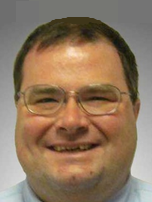
Bryce Meyer
St. Louis Space Frontier
Current, works for a major technological university doing software research and consulting, runs two LLCs, one of which Cyan React, develops bioreactors. Previously worked as in the CTO’s office and as an Internet Network Engineer for WilTel Comminucations/Level 3 communications. Was a USAF officer, duties included Program Manager, Engineer, and Assistant Professor at VMI. Degrees: B.S. in Aerospace Engineering from University of Missouri-Rolla now Missouri S&T, M.S. in Computer Science/Software Engineering from University of West Florida, and a M.S. in Biology from Univ, of MO-St. Louis. Accomplishments: Software and Tech for Aerospace systems, and more importantly, the development and calculation of mass flows for closed cycle space farms that include bioreactors. Publications: numerous, key publications:
http://www.nss.org/settlement/journal/NSS-JOURNAL-Multistage-Evolving-Space-Farms.pdf
https://arc.aiaa.org/doi/pdf/10.2514/6.2018-5144
Presentation: Role of Aquaculture in Space
Bryce Meyer
St. Louis Space Frontier
Current, works for a major technological university doing software research and consulting, runs two LLCs, one of which Cyan React, develops bioreactors. Previously worked as in the CTO’s office and as an Internet Network Engineer for WilTel Comminucations/Level 3 communications. Was a USAF officer, duties included Program Manager, Engineer, and Assistant Professor at VMI. Degrees: B.S. in Aerospace Engineering from University of Missouri-Rolla now Missouri S&T, M.S. in Computer Science/Software Engineering from University of West Florida, and a M.S. in Biology from Univ, of MO-St. Louis. Accomplishments: Software and Tech for Aerospace systems, and more importantly, the development and calculation of mass flows for closed cycle space farms that include bioreactors. Publications: numerous, key publications:
http://www.nss.org/settlement/journal/NSS-JOURNAL-Multistage-Evolving-Space-Farms.pdf
https://arc.aiaa.org/doi/pdf/10.2514/6.2018-5144
Presentation: Role of Aquaculture in Space

Dan Hawk
ITS Space Agency
Dan Hawk is a federally-enrolled Oneida Nation tribal member. Dan is a veteran last serving as a Navy nuclear reactor operator on the fast-attack submarine SSN 712 Atlanta. As an electronics technician, Dan worked on all kinds of military electronic equipment, i.e., test equipment, satellite communication, and electronic counter-countermeasures. Dan specializes in Amazon Black Earth and previously researched carbon astronaut-advanced life support for NASA resulting in sending one (1) ton of high cation-exchange-capacity ABE carbon to Bikini Atoll to mitigate radiocesium-137 in coral-soil fruit trees. Dan started First Nations Launch, Tethered Aerostat Program, MSFC Industrial Hemp Rocket Fuel. Currently following the Salish Kootenai College BisonSat Launch, Dan began the International U.S.-Canada First Peoples Satellite Initiative for indigenous space development and exploration. Dan is currently working on several FP satellite missions.
Presentation: Carbon’s Role in Sustainable Space Development
Dan Hawk
ITS Space Agency
Dan Hawk is a federally-enrolled Oneida Nation tribal member. Dan is a veteran last serving as a Navy nuclear reactor operator on the fast-attack submarine SSN 712 Atlanta. As an electronics technician, Dan worked on all kinds of military electronic equipment, i.e., test equipment, satellite communication, and electronic counter-countermeasures. Dan specializes in Amazon Black Earth and previously researched carbon astronaut-advanced life support for NASA resulting in sending one (1) ton of high cation-exchange-capacity ABE carbon to Bikini Atoll to mitigate radiocesium-137 in coral-soil fruit trees. Dan started First Nations Launch, Tethered Aerostat Program, MSFC Industrial Hemp Rocket Fuel. Currently following the Salish Kootenai College BisonSat Launch, Dan began the International U.S.-Canada First Peoples Satellite Initiative for indigenous space development and exploration. Dan is currently working on several FP satellite missions.
Presentation: Carbon’s Role in Sustainable Space Development

Simona Lovin
Cognosante LLC
Simona Lovin is a seasoned business and IT executive whose sector expertise includes U.S. government, healthcare, international development, investment services, higher education, and telecommunications. A life-long space enthusiast, Simona is leveraging her strategy-setting and business architecture experience to envision viable futures in space development.
Simona holds a Master of Business Administration from the Heriot-Watt University, the Edinburgh School of Business, and a Master of Science in Computer Science from the Polytechnic Institute of Bucharest, Romania. She lives in Arlington, Virginia and enjoys learning and writing about cutting-edge ideas, technologies and business models.
Presentation: The Man on the Moon Needs Health Care
Simona Lovin
Cognosante LLC
Simona Lovin is a seasoned business and IT executive whose sector expertise includes U.S. government, healthcare, international development, investment services, higher education, and telecommunications. A life-long space enthusiast, Simona is leveraging her strategy-setting and business architecture experience to envision viable futures in space development.
Simona holds a Master of Business Administration from the Heriot-Watt University, the Edinburgh School of Business, and a Master of Science in Computer Science from the Polytechnic Institute of Bucharest, Romania. She lives in Arlington, Virginia and enjoys learning and writing about cutting-edge ideas, technologies and business models.
Presentation: The Man on the Moon Needs Health Care
Elliott Gorfain
Founder, Higher Ground Initiative
Elliott Gorfain is the founder of Higher Ground Initiative, a company that partners with cannabis-based businesses to develop and fund indoor farming techniques and technologies that can be utilized for space farming and post production processing/utilization of plant-based resources. Elliott Gorfain is also the founder of Mary’s Little Helpers, a cannabis consulting and educational company that helps clients understand the myriad of details involved with legally growing, processing, and marketing and what many consider to be planet earth’s most medically relevant and psychologically fascinating plants. Elliott started his career as a molecular biologist and product manager and has over 13 years of experience in the field of biotechnology. He is the sole inventor of a patented device that allows laboratory automation platforms to perform techniques that previously only humans could accomplish. Elliott has over 24 years of experience in indoor hydroponic cultivation and has recently been the General Manager of a leading hydroponic retail store.
Presentation: A Search for Higher Ground: Space Farming and Lessons Learned From Indoor Cannabis Cultivation
Elliott Gorfain
Founder, Higher Ground Initiative
Elliott Gorfain is the founder of Higher Ground Initiative, a company that partners with cannabis-based businesses to develop and fund indoor farming techniques and technologies that can be utilized for space farming and post production processing/utilization of plant-based resources. Elliott Gorfain is also the founder of Mary’s Little Helpers, a cannabis consulting and educational company that helps clients understand the myriad of details involved with legally growing, processing, and marketing and what many consider to be planet earth’s most medically relevant and psychologically fascinating plants. Elliott started his career as a molecular biologist and product manager and has over 13 years of experience in the field of biotechnology. He is the sole inventor of a patented device that allows laboratory automation platforms to perform techniques that previously only humans could accomplish. Elliott has over 24 years of experience in indoor hydroponic cultivation and has recently been the General Manager of a leading hydroponic retail store.
Presentation: A Search for Higher Ground: Space Farming and Lessons Learned From Indoor Cannabis Cultivation

Doug Gage
XPM Technologies
Doug Gage is an independent technology consultant. At DARPA from 2000-2004, he managed programs in robotic software, including Robonaut work at NASA JSC and rover autonomy work at NASA JPL. He served as external co-chair of NASA’s Capabilities Roadmapping Team for Autonomous Systems and Robotics. He has presented papers at several Mars Society conventions, ISDCs, and other venues on the general subject of how to keep humans safe, secure, productive, happy, and sane during extended stays on Mars.
Presentation: Better Life Support Sooner — Please!
Doug Gage
XPM Technologies
Doug Gage is an independent technology consultant. At DARPA from 2000-2004, he managed programs in robotic software, including Robonaut work at NASA JSC and rover autonomy work at NASA JPL. He served as external co-chair of NASA’s Capabilities Roadmapping Team for Autonomous Systems and Robotics. He has presented papers at several Mars Society conventions, ISDCs, and other venues on the general subject of how to keep humans safe, secure, productive, happy, and sane during extended stays on Mars.
Presentation: Better Life Support Sooner — Please!

John Wilkes
Professor, retired from Worcester Polytecnic Institute
Sociologist and leader of a team that designed a lunar base as part of an architectural contest in 2010. The base was made 90% of local materials, could feed and pay for itself. It received an award for technical feasibility and elegance.
Demands on the greenhouse were so extensive that 40% of the base was devoted to agriculture, and that was not just for food and medicine. It was used to produce organic materials with a wide range of purposes and applications.
Presentation: Lunar ISRU, and the Problem of Plastics
John Wilkes
Professor, retired from Worcester Polytecnic Institute
Sociologist and leader of a team that designed a lunar base as part of an architectural contest in 2010. The base was made 90% of local materials, could feed and pay for itself. It received an award for technical feasibility and elegance.
Demands on the greenhouse were so extensive that 40% of the base was devoted to agriculture, and that was not just for food and medicine. It was used to produce organic materials with a wide range of purposes and applications.

